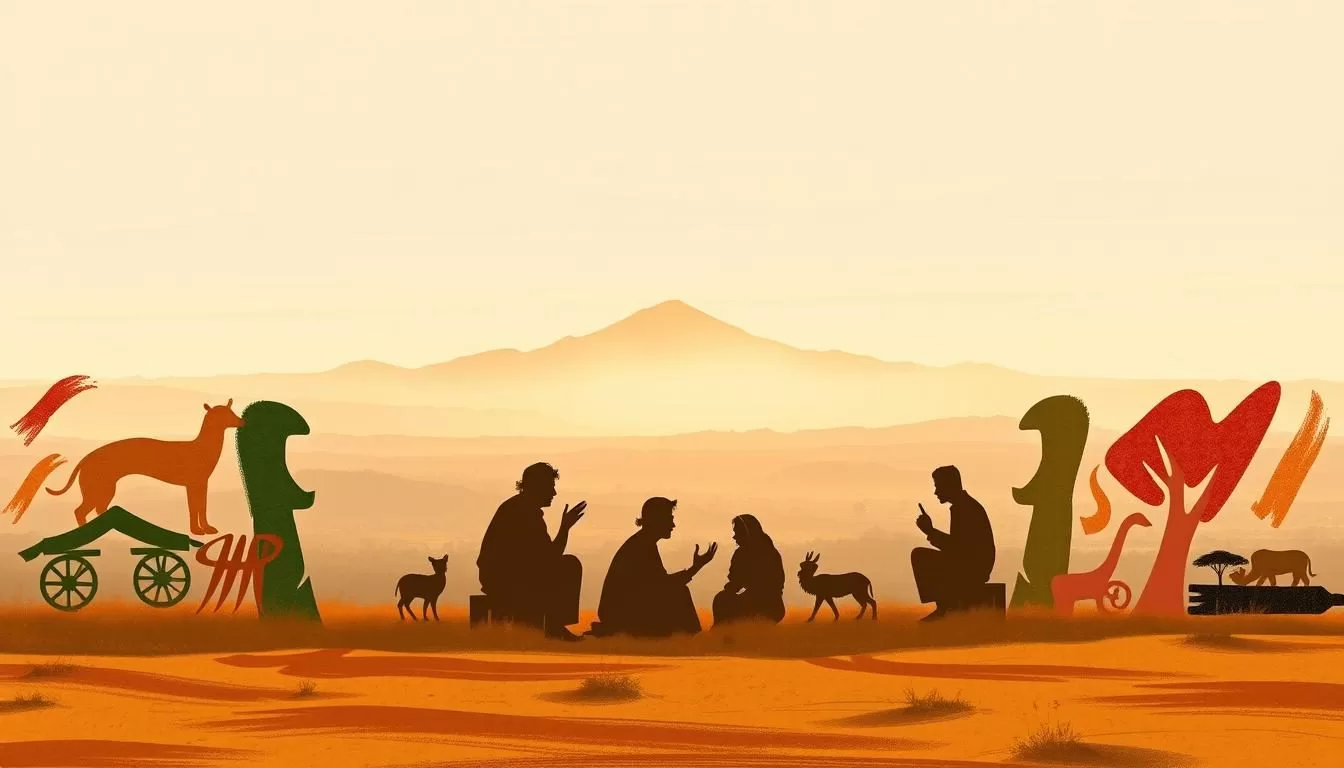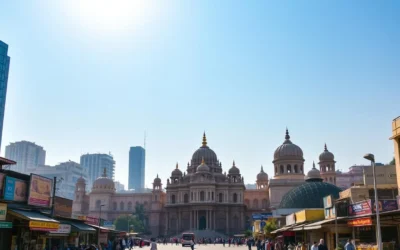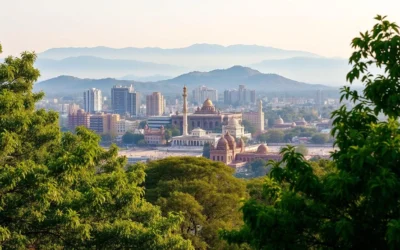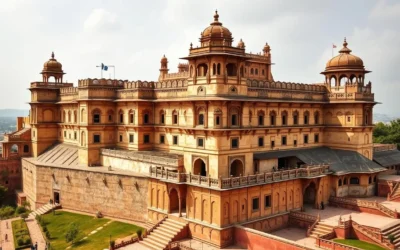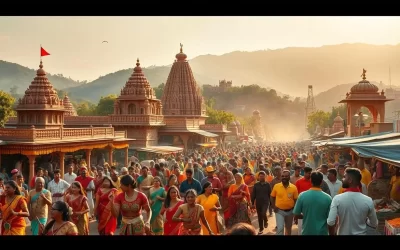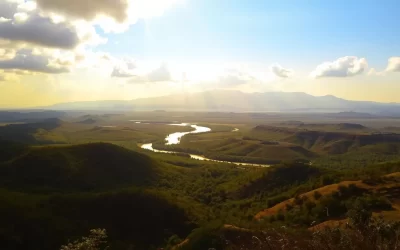✓ Accommodations✓ Flights✓ Rental Cars
As you explore the heart of India, you’ll discover that Madhya Pradesh is a region rich in cultural diversity and linguistic heritage.
Located in central India, this state boasts a complex linguistic landscape, with Hindi being the predominant language for official work and widely understood by the people.
Understanding the languages spoken in Madhya Pradesh will enhance your travel experience, allowing you to connect with locals more effectively and appreciate the region’s diverse cultural tapestry.
The Linguistic Landscape of Madhya Pradesh
As you explore Madhya Pradesh, you’ll discover a rich tapestry of languages. The state’s linguistic diversity is shaped by its geographical and cultural characteristics. When you move from urban regions to rural areas, you’ll notice different shades of languages, with regional variations in the way Hindi is expressed, including local words, tone, and dialects.
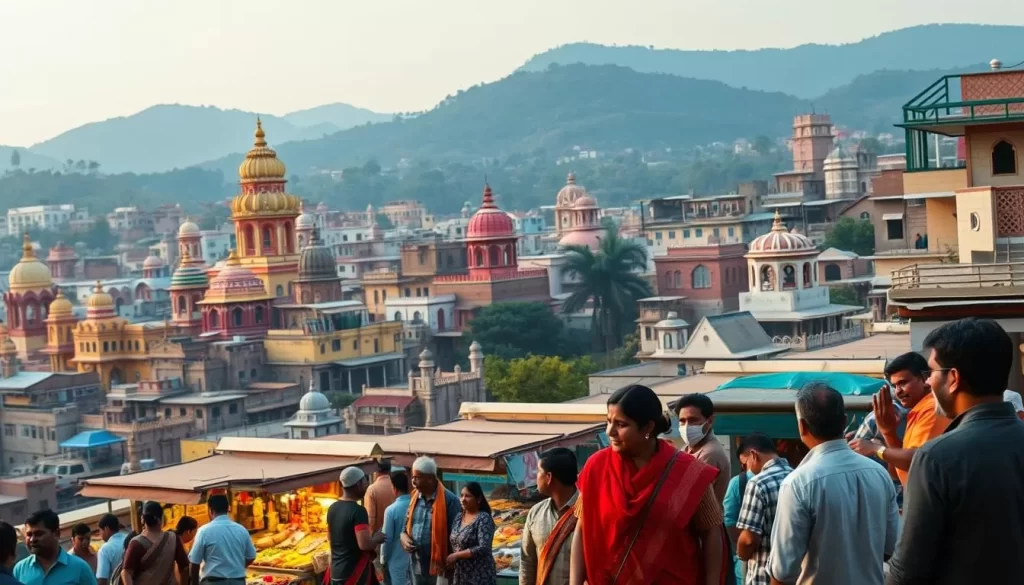
Madhya Pradesh’s Position in India’s Language Diversity
Madhya Pradesh is a significant contributor to India’s language diversity. The state is home to numerous languages and dialects, making it a fascinating example of linguistic richness. With a substantial population and varied geographical regions, Madhya Pradesh showcases a complex language landscape.
Language Distribution Across the State
The distribution of languages in Madhya Pradesh follows distinct geographical patterns. In urban areas like Bhopal, Indore, and Jabalpur, standard Hindi dominates public communication. In contrast, rural regions maintain stronger connections to regional dialects. As you travel through the state, you’ll notice how the language landscape changes from district to district, with tribal areas like Mandla and Dindori maintaining their linguistic uniqueness.
The population distribution across Madhya Pradesh has created interesting language pockets where certain dialects flourish in specific regions. Understanding this distribution helps you appreciate how languages in Madhya Pradesh aren’t just communication tools but important markers of regional identity and cultural heritage.
Hindi: The Official and Dominant Language
As you explore Madhya Pradesh, you’ll discover that Hindi is not only the official language but also the dominant form of communication across the state. This widespread use of Hindi facilitates interaction among the population and plays a crucial role in the state’s cultural and administrative functions.
Status and Prevalence of Hindi in Madhya Pradesh
Hindi is widely spoken and understood across Madhya Pradesh, making it a unifying factor among the diverse population. The language is used in official communications, education, media, and daily interactions, reinforcing its importance in the state.
The prevalence of Hindi is evident in its use across various sectors, including government, education, and media. This widespread adoption underscores the language’s significance in facilitating communication and fostering a sense of unity among the people of Madhya Pradesh.
Regional Variations of Hindi Within the State
The expression of Hindi in Madhya Pradesh varies regionally, with differences in vocabulary, tone, and dialect. For instance, the Malwa, Bundelkhand, and Mahakoshal regions have distinct ways of speaking Hindi, influenced by local dialects and cultural nuances.
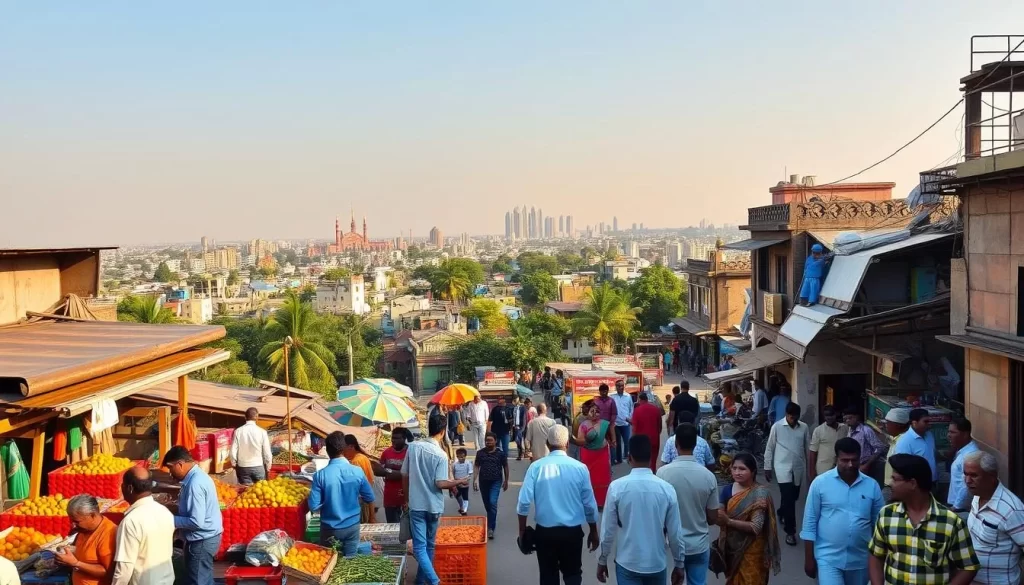
These regional variations are shaped by historical, cultural, and geographical factors, resulting in a rich linguistic diversity. Understanding these differences can enhance your appreciation of the state’s linguistic heritage and improve your interactions with locals.
| Region | Characteristics of Hindi |
|---|---|
| Malwa | Soft tone, unique vocabulary |
| Bundelkhand | Influenced by Bundeli dialect |
| Mahakoshal | Distinct intonation patterns |
Regional Languages and Dialects by Geography
Madhya Pradesh’s varied regions are home to a multitude of languages and dialects, each with its unique characteristics. The state’s diverse geography plays a significant role in shaping the linguistic landscape, with different regions having their distinct linguistic features.

Western Madhya Pradesh: Malwi and Nimari
In Western Madhya Pradesh, you’ll encounter Malwi and Nimari as prominent regional dialects. Malwi is predominantly spoken in the Malwa region, which includes cities like Indore and Ujjain. Nimari, on the other hand, is spoken in the Nimar region, covering areas such as Khandwa and Burhanpur. These dialects are integral to the cultural identity of their respective regions.
- Malwi is known for its distinct vocabulary and is widely used in everyday communication in the Malwa region.
- Nimari has its own unique flavor, influenced by the cultural heritage of the Nimar region.
Northern Madhya Pradesh: Bundeli
Northern Madhya Pradesh is home to the Bundeli dialect, which is spoken in areas like Chhatarpur and Panna. Bundeli has historical significance and is closely related to the cultural practices of the Bundela community.
The use of Bundeli in this region highlights the linguistic diversity within Madhya Pradesh, showcasing how different areas have their own distinct linguistic traditions.
Eastern and Southern Madhya Pradesh: Bagheli and Other Dialects
As you move towards Eastern Madhya Pradesh, you’ll find that the Rewa region, including districts like Satna, Sidhi, and Shahdol, predominantly speaks Bagheli. Bagheli shares similarities with dialects spoken in neighboring Uttar Pradesh while maintaining its unique characteristics.
In Southern Madhya Pradesh, the linguistic landscape is characterized by the presence of Hindi, Gondi, and Korku. The region’s linguistic patterns are influenced by both central Indian language traditions and elements from neighboring states.
- The eastern regions of Madhya Pradesh feature a complex linguistic landscape where Bagheli coexists with tribal languages and standard Hindi.
- Understanding these regional dialects enhances your appreciation of the unique cultural identity of Eastern and Southern Madhya Pradesh.
Tribal Languages of Madhya Pradesh
The tribal communities of Madhya Pradesh speak a variety of languages that have been preserved for thousands of years. These languages are an integral part of the cultural heritage of the region, spoken by tribes such as the Gond, Baiga, Korku, Halba, and Mariya, who are native to the mountain ranges of Satpura and Vindhyachal.
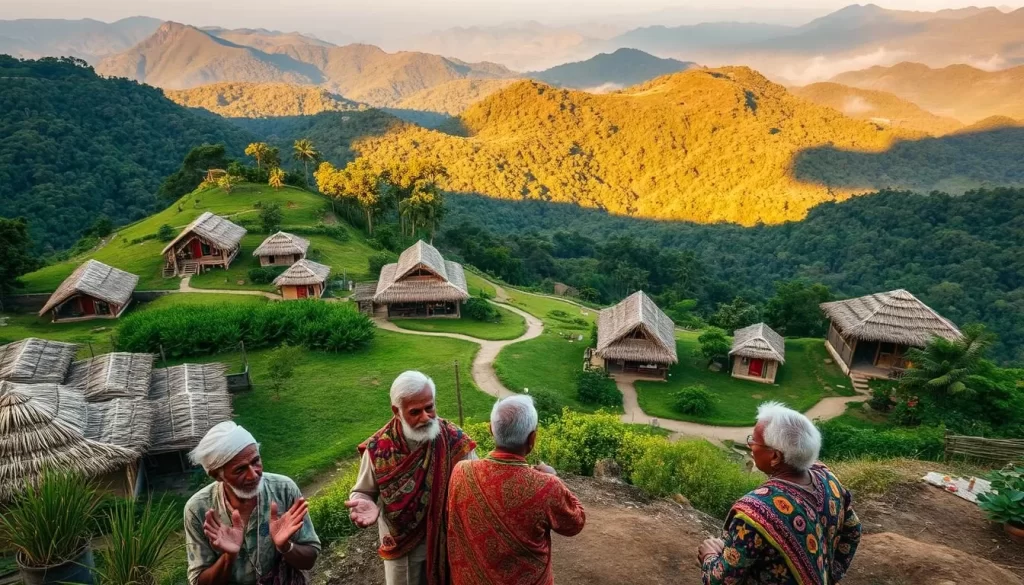
Bhili Language and Its Speakers
Bhili is spoken by the Bhil tribe, one of the largest tribal communities in India. The language has several dialects and is an important part of the community’s cultural identity. Efforts are being made to document and preserve Bhili, as it is considered an essential part of the tribe’s heritage.
Gondi and Its Cultural Significance
Gondi is another significant tribal language, spoken by the Gond tribe. It has a rich oral tradition and is used in various cultural and religious contexts. Gondi is not just a means of communication; it is a vital link to the community’s history and cultural practices.
Other Tribal Languages: Korku, Nahali, and More
Besides Bhili and Gondi, other tribal languages spoken in Madhya Pradesh include Korku, an Austro-Asiatic language, and Nahali, a language isolate with no known genetic relationship to other languages. These languages represent a significant part of the state’s linguistic diversity and are crucial to understanding the cultural evolution of the region.
Understanding these diverse tribal languages helps you appreciate the remarkable linguistic heritage of Madhya Pradesh. Documentation and preservation efforts are essential to maintain this cultural wealth for future generations.
Conclusion: Preserving Madhya Pradesh’s Linguistic Heritage
As you conclude your journey through the linguistic landscape of Madhya Pradesh, it’s clear that the state’s language diversity is a treasure worth preserving. The official language, Hindi, plays a unifying role, while regional dialects and tribal languages enrich the cultural tapestry.
Understanding the language distribution in Madhya Pradesh enhances your travel experience and fosters deeper connections with local communities. However, the preservation of the state’s linguistic heritage faces challenges from the dominance of Hindi and the influence of English.
Efforts to document and revitalize regional and tribal languages are crucial. By learning a few words in local dialects, you show respect for the culture and contribute to preserving this invaluable heritage. Madhya Pradesh’s linguistic diversity reflects India’s broader language landscape, where hundreds of languages coexist, each representing unique cultural perspectives.
The above is subject to change.
Check back often to TRAVEL.COM for the latest travel tips and deals.
